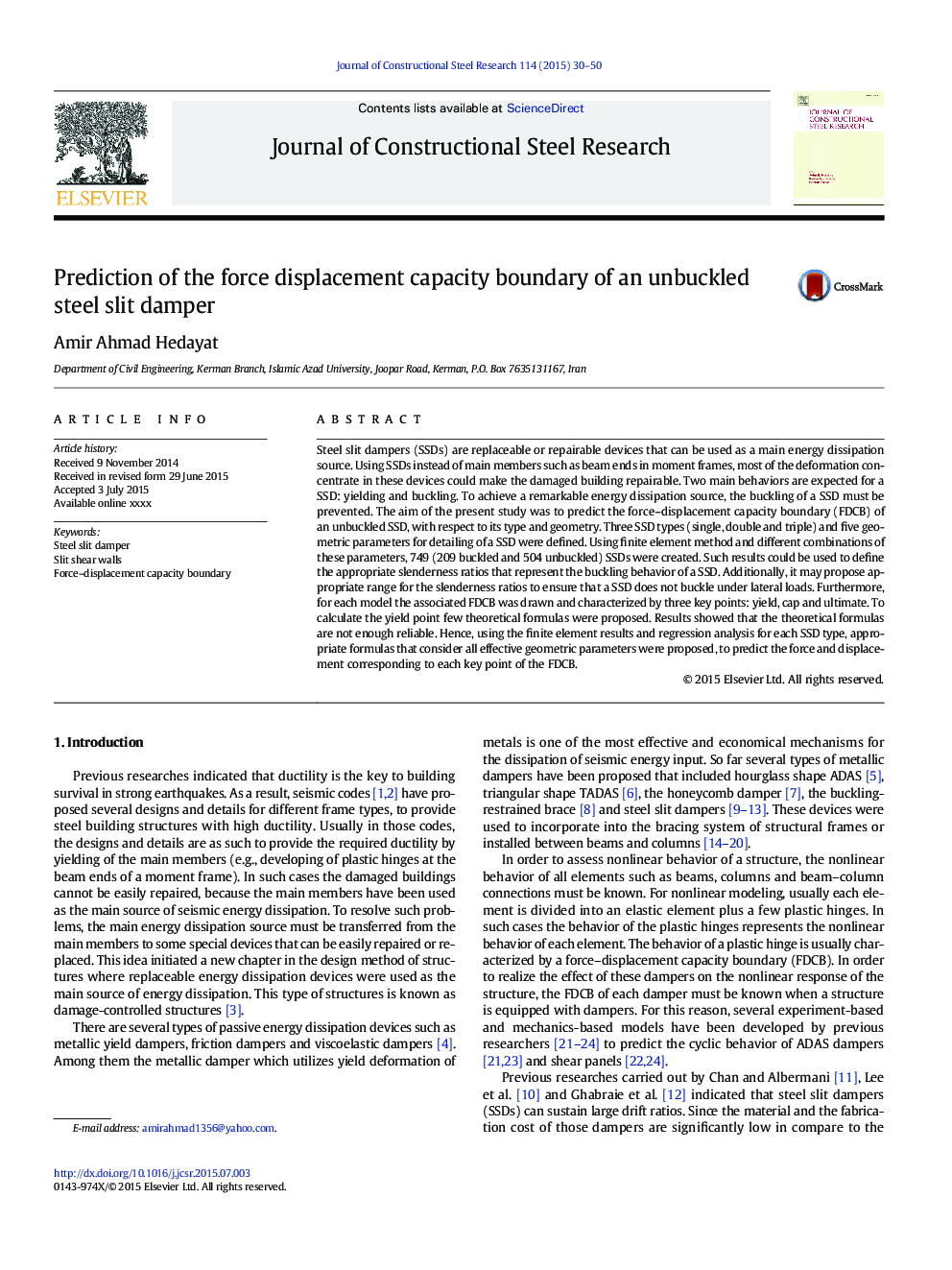| Article ID | Journal | Published Year | Pages | File Type |
|---|---|---|---|---|
| 6751719 | Journal of Constructional Steel Research | 2015 | 21 Pages |
Abstract
Steel slit dampers (SSDs) are replaceable or repairable devices that can be used as a main energy dissipation source. Using SSDs instead of main members such as beam ends in moment frames, most of the deformation concentrate in these devices could make the damaged building repairable. Two main behaviors are expected for a SSD: yielding and buckling. To achieve a remarkable energy dissipation source, the buckling of a SSD must be prevented. The aim of the present study was to predict the force-displacement capacity boundary (FDCB) of an unbuckled SSD, with respect to its type and geometry. Three SSD types (single, double and triple) and five geometric parameters for detailing of a SSD were defined. Using finite element method and different combinations of these parameters, 749 (209 buckled and 504 unbuckled) SSDs were created. Such results could be used to define the appropriate slenderness ratios that represent the buckling behavior of a SSD. Additionally, it may propose appropriate range for the slenderness ratios to ensure that a SSD does not buckle under lateral loads. Furthermore, for each model the associated FDCB was drawn and characterized by three key points: yield, cap and ultimate. To calculate the yield point few theoretical formulas were proposed. Results showed that the theoretical formulas are not enough reliable. Hence, using the finite element results and regression analysis for each SSD type, appropriate formulas that consider all effective geometric parameters were proposed, to predict the force and displacement corresponding to each key point of the FDCB.
Related Topics
Physical Sciences and Engineering
Engineering
Civil and Structural Engineering
Authors
Amir Ahmad Hedayat,
